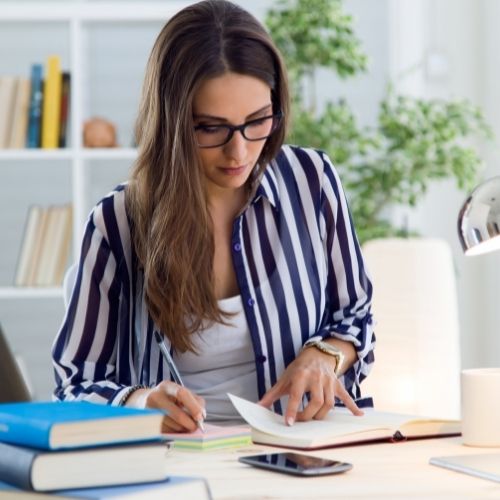
If you’re new to the idea of asset tracking, you might also not be familiar with the term ‘asset register.’ An asset register, or a fixed asset register, is a complete and detailed list of all assets a company owns. Its purpose is to enlist all items or assets with all their relevant details in one place.
An asset register records important information like asset ID, location, owner, and condition. It also records financial data like the cost of purchase, date of purchase, current valuation, depreciation details and more.
Maintaining an asset register holds countless benefits for a business. But the way a business maintains its asset register determines how much time and effort goes into keeping it accurate and up to date. Asset management, ideally, should take minimum input, i.e, time and resources, while delivering maximum output, i.e, productivity.
In this blog post, we will discuss how different businesses maintain their asset registers. You’ll get to review different asset management methods in detail so you can decide which one is the best for you and your business.

Conventional Ways to Maintain an Asset Register
Pen and Paper
The pen and paper method is the most rudimentary option for asset tracking. It’s just one step better than trying to remember all your business assets in your mind. It involves keeping a physical ledger where you can record asset details.
As compared to other asset tracking methods, it might seem like the simplest one but there are various drawbacks to using pen and paper to maintain an asset register. For one, you have extremely limited space. You cannot keep comprehensive asset profiles that cover all essential details about an asset.
Secondly, this method is prone to a lot of human errors, and there’s no way to correct an error except to form a new entry altogether. Handwritten text and numbers are more likely to be miswritten or misread, and it’s hard to spot a mistake. If you do spot a mistake, you cannot just remove the entry and re-enter it correctly. You’d have to strike it through and write in what limited space you have left.
In terms of time and resources, the pen and paper method takes outrageous amounts of time and can sometimes eat whole workdays up. This asset tracking method is strictly not recommended if your business owns more than 10 assets.
Spreadsheets
Just like asset tracking with pen and paper is better than trying to remember asset details in your head, using spreadsheets is one step better than using the former. It’s a paperless option and takes away some of the drawbacks of using pen and paper.
For example, it gives you more space. Each asset is usually allocated a row, and you can have as many rows as you like to record as many asset details. But still, things can get really messy. Working with giant spreadsheets can often become overwhelming and boring.
Spreadsheets also do not have any advanced asset tracking features that are needed for robust asset management in the modern business world. There is also a very limited opportunity for multiple employees to collaborate on spreadsheets.
While this method is a lot better than using pen and paper, it’s not nearly enough to keep up with a fast-paced work environment. This brings us to asset management software.
Using Asset Management Software
Asset management software is a specialised software application that businesses can use to maintain their asset register. It takes away all drawbacks of conventional methods and gives you the perfect platform to track your assets efficiently and effortlessly.
This software solution can be used as a mobile app or web portal. It lets you add all your assets, with a unique asset profile assigned to each item. The asset profile functions as a separate page that carries every piece of information for an asset ranging from its location, assignee, images to usage history, valuation and depreciation.
Furthermore, businesses can utilise the various powerful features offered by asset management software. For example, it lets you give a unique identity to each asset with asset tags. These asset labels also help you track asset locations easily. Other features like equipment checkout, bookings and accurate auditing help it take a clear win over all other asset tracking methods.
How Should You Maintain Your Asset Register?
If you want an up-to-date and accurate asset register that’s easy to use, time-saving and economical, then itemit should be your go-to. Maintaining an asset register is as easy as it gets with this asset tracking software.
itemit is an off-the-shelf solution which means you can set it up and start using it right away. The app and web portal are extremely to use and you’ll start seeing the results from the first day.
To learn more about how itemit can help you maintain your asset register, feel free to reach out at team@itemit.com. You can also try out itemit’s unique features for yourself and get a hands-on user experience with a 14-day free trial. Fill in the form below to start!

Try itemit
Choose a better way to track
your assets.
Start your free 14-day trial now!

Keep Learning
itemit Blog
Tips, guides, industry best practices, and news.
How To Conduct an Asset Audit: Program Guide
Our guide teaches you how to conduct an asset audit. It also provides best practices, processes, and recommendations for ensuring accurate asset tracking.
How to Keep Track of Computer Inventory
Keeping track of all of your computer inventory isn’t easy. Read this article now to learn how to make computer inventory management work!
How Do You Prepare An Asset Register?
Asset register apps can be beneficial to businesses as they can help owners to keep control of their assets. Read this article to find out more!



